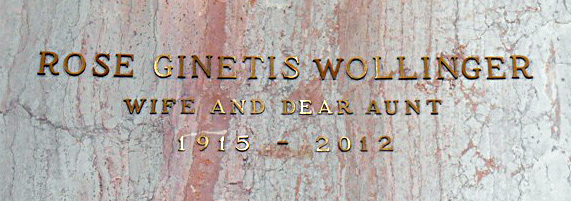|
|
|||
|
|||
|
Peter Ginetis, a native of Russia, lived with his family in Chicago.
He and his wife, Victoria, had five children: Ludvika (b Nov 1899 in
Russia), John Peter (Sep 4, 1904 – Dec 12, 1993), Petros, Victoria
Astrea (Oct 22, 1912 – Mar 1, 1996) and Cometa Rose (1915 – 2012).
Their son, Petros (April 1, 1908 – May 11, 1910), died in Chicago
before the family moved to Matagorda.
Peter Ginetis had married his wife when she was 16, and when his
daughter turned 15, he decided she should start her search for a
husband. He ran an ad in the Chicago Herald newspaper on June
3rd, and she and her mother promenaded up and down near
Lake Michigan to allow interested suitors to view the prospective
bride.
A reporter visited her to see how the search was going and Ludvika
thought him to be a prospective suitor. She told him, “When
one does not want them they abound. Let one walk sedately through
the street, and they tip the hat and cough and make the eye to wink.
But let one decide to have done with girlhood, let one frankly
advertise in the newspapers for a husband, and of a sudden it is a
manless world.”
Of course, she had some characteristics she hoped she would find in
her husband: |
|||
|
When one does not want them they abound. Let one walk sedately through the street, and they tip the hat and cough and make the eye to wink. But let one decide to have done with girlhood, let one frankly advertise in the newspapers for a husband, and of a sudden it is a manless world. So Ludvika (it isn't a half bad name the way its owner coos it--Lood-week-a, like that!) discovered yesterday. To Those Who Wait. Early in the morning she was up and dressed in the smart little gown she had fashioned herself after one in a downtown shop window, waiting in the front room of her home at 805 Bradley place to pick out her husband. So she was waiting still when the doorbell rang in the evening, her best dress now a bit crumpled and a suggestion of redness about her eyes. It was the advertiser herself who opened the door. On the threshold stood a young man. In his hand was the advertisement, torn from the paper. "I am Lood-week-a," said the girl, smiling. "Won't you come in?" The caller permitted himself to be put in the biggest chair in the front room. Far back in the house, discreetly distant but vigilantly present, he could hear Ludvika's parents moving about. He felt Ludvika's big black eyes traveling over him appraisingly. "You like me?" she demanded suddenly. "Why--yes, indeed," stammered the visitor, who hadn't figured on opening the conversation in just that way. "I," confessed Ludvika solemnly, "I--theenk--I like you!" "Have you found your husband yet?"--an attempt at formality. Alas, These Men! Ludvika, 15 year old candidate for matrimony, co-partner with her janitor father and her overworked mother is an advertising campaign for a mate, tried to laugh and gave it up. "The men I cannot understand," she said. "There are so many of them before, but, of course, I could have nothing to do with them without the consent of my parents. Now, I have put it in the paper that I am ready for a husband--one who is clean, who will be good to me, and can support me--and none comes. "There was a telephone call this morning. A man who had read the advertisement asked mother and me to meet him at noon at Chicago avenue and Rush street. We went, but he was not there. It was a joke, we think. This evening at 5 we were at Grace street and Sheridan road, as we said in the paper. Small boys annoyed us and women stared--but there were no men. "But perhaps"--Ludvicka looked steadily at the caller--"perhaps it was just as well," As They Do in Odessa The caller started to say something. Ludvicka hadn't finished. She held the floor: "I am not yet 16. Mother was younger than that when she was married, though. I was born in Odessa, where girls marry early, you see. Already I can cook, can make my own clothes, and can keep house. And I-I think I can love. Now, tell me about you!" "I?" echoed the visitor. "Why, I'm just a reporter." "O," murmured Ludvicka. She was back in the window again, with the light dimly burning behind her, when her visitor hurried officeward with a different sort of story then he had expected to get.
Chicago Daily Tribune, June 5, 1915 |
|||
|
SPECIFICATIONS ARE GIVEN
Special to The Washington Post. Chicago, July 23.--Ludvika P. Ginetis, aged 16 years, brought this notice to a newspaper office: "GET married. Mother and father have 16 years, wants to get married. Mother married at 16. Wants to get a good, wealthy husband of high education, who understands the truth. Who would love my daughter and keep her as his wife for all life. Who wants can see all the family after noon at 5 o'clock every day at corner of Grace street and Sheridan road by the lake n bench or on the grass. Mother and daughter wear a white waist and a black ribbon on the neck. North Side, Chicago, Ill." Want to Get Husband. "I want to have this put in the 'personal' notices" she said bashfully. "You see, mother and father both believe I ought to get married, and, well--I'd like to have a husband. "Of course, I've never had a beau in my life, and I don't know anything about love, except that I've heard it's very nice. But I've been to school and business college, and can cook and sew, and I think I'd make a good wife. "Mother was married to father when she was 16. I'll be 16 in November, and by that time I'd like to be married, too. Mother always has been very happy, and I know I shall be also, if I can get a husband who will treat me right and is rich enough so that I need not do the washing." Must Meet Specifications. Here are some conditions specified as to the future husband of Ludvicka:
Must be young.
The Washington Post, July 23, 1915 |
|||
|
Chicago, Aug. 11.--Little Ludvika Ginetis is on the matrimonial market once more. Out of 212 prospective husbands who came forward when her father advertised for a well fixed son-in-law last June, not one has been found on whom Ludvika and the rest of the family can agree. So Ludvika and her father, who is janitor of an apartment house came to the office of a morning paper yesterday to see if something couldn't be printed that would turn up another batch of eligibles. "Please put something in the paper that will get ma good, kind husband," pleaded Ludvika. "I would like to get a rich one; some one that makes as much as $20 a week, maybe, and could take me on a vacation. You must hurry, for I am getting older every day. Already I am past 15."
Grand Forks Herald, August 12, 1915 |
|||
|
At Crown Point Tuesday afternoon a marriage license was granted to Sebastian Carroll Braganza de la Coralla, 74 years of age, and Miss Ludvicka Ginetis, who will be 16 in November. The couple were married while in Crown Point. The marriage was a result of an advertisement in the Chicago Herald on June 3rd by the mother of Ludvicka. It asked for the girl a good, wealthy, educated husband, one who understands the truth. It state that the mother and her daughter would wait at the Sheridan road and Grace street at 5 o'clock in the afternoon for the "lucky" husband. Several passed in review and others called by telephone to the home of Ludvicka but none had the proper jingle and the days and weeks passed and poor Ludvicka went unmarried. Recently, however, Sebastian, etc., de la Coralla, who is a Spanish grandee and lives at Port Byron, Ill., found a copy of the papery containing the advertising, which shows that the effect of advertising is lasting. He hunted up Ludvicka and her mother and the terms of the marriage were agreed upon. The fact that Coralla was 74 years of age had had been married and divorced within the past year did not bother her parents, for he had the "jingle," even his bones jingled. Father and Mother Ginetis were very happy as they saw their 15-year-old daughter taken away to his castle near Port Byron, for, they said, he is a Spanish grandee, of noble lineage, owns an estate at Seville, and had an honor medal and a pension from the Spanish government. Ludvicka has had a commercial education and can cook and sew, Poor Ludvicka.
Lafayette Tippecanoe County Democrat, October 15, 1915 |
|||
|
Lake County Indiana Marriage Records Ludwika P. Ginites and S. DeLaCorolla married October 5, 1915 The wedding took place in Crown Point, Lake County, Indiana on October 5, 1915, just before Ludvika turned 16. James H. Cothery, Justice of the Peace, officiated.
The Count told Peter Ginetis he would take care of the entire
family, but they would have to move to Texas where he planned to
purchase property. |
|||
|
YOUNG BRIDE OF COUNT COMING TO TEXAS TO MAKE HOME ON RANCH Sixteen-Year-Old Bride Expresses Delight at Winning Titled Husband Despite His 74 Years Will Reside on Matagorda Peninsula.
Chicago, Ill., October 13.--Just as in the fairy tales she heard in the folklore of her Lithuanian birthplace, Ludvicka P. Ginetis has become a countess and will be carried away to a home beside an inland sea.
She is now Countess Ludvicka Braganza de la Corrala, bride of Sebastian Carrill Braganza de la Coralla and the count, in spite of his seventy four years, was in youthful and happy spirits when he asked his bride and her family to be ready to accompany him home before the end of the week.
They go to Matagorda Bay, Texas, where a part of the Gulf is cut off by the shore to make an inland sea an where the count has a ranch.
Little Countess Ludvicka who is just 16 years old, was beside
herself with happiness and fear that it wasn't really true she said,
as she showed a picture of her husband who traces his lineage to the
Carrolls of Carrolton and who is a student of astrophysics, seismic
influences, sculpture and painting. It was while on a visit to Post
Byron, Ill., that the count me Miss Ginetis, who resides in Chicago. |
|||
|
NOBILITY ARRIVES IN MATAGORDA.
Matagorda, Texas, November 7.--Count Sebastian Carroll de la Corella
and his wife, Countess Ludvicka Braganza de la Corrella, and the
countess' father, P. K. Ginetis, arrived in Matagorda this week,
direct from Chicago with the expectation of making this place their
home, on some property they recently purchased here.
Matagorda County Tribune, Friday, November 12, 1915 |
|||
|
|
|||
|
Victoria received the distinction this morning of a visit from a family of the Russian nobility. They were Countess Ludvicka Braganza de la Coralla, her little son [brother] and daughter [sister], and her father, P. K. Ginetis, the latter's home being in Chicago. They came here from Matagorda, Texas, where Count Sebastian has purchased a tract of land on which to make his home. The purpose of their visit to Victoria was to rent a house at Matagorda, which is owned by Dr. D. H. Braman of this city. They arrived at Matagorda a few days ago and found it inconvenient to move onto their property, necessitating their securing of other quarters in which to reside temporarily. Through the courtesy of Dr. Braman, the party visited The Advocate office, and in conversation that was had it was found they were highly pleased with America, and Texas in particular. The family formerly resided at Odessa, Russia, but have been in the United States for several years. While the foreign accent is very noticeable, they are mastering the English language admirably.
The party left here this afternoon for Matagorda.--Daily Advocate, November 13, 1915 |
|||
|
|||
|
A 5-seat Automobile, Cadillac Model Cheap; 3 boats over 20 ft. long, 3 engines, 3 to 14 H. P.; Splendid lumber with strong ribs and braces ready to build a 38 ft. Cockpit launch, capacity to 15 persons. A very fine baby buggy, household furniture; 15 acres, close to town near Bay.
Apply P. K. GINETIS, Matagorda.
Matagorda County News and Midcoast Farmer,
Bay City, December 14 & 17, 1915 |
|||
|
P. L. Ginetis Kills His Wife and Himself After Trying to Kill Count Braganza
At the breakfast table about 8 o'clock Monday morning, in Matagorda, Mr. P. L. Genitis shot his wife in the forehead and twice in the breast, causing instant death, and then sought to kill other members of the family. At the shots which killed Mrs. Genitis, the children and Count Braganza fled from the room and into the yard the children all screaming and calling the help. Mr. Genitis shot three or four times at the Count, who, stumbling, fell and the madman, no doubt thinking he had killed the Count, went into the house in search of the Countess, his daughter. There he met Mr. George Kilbride and snapped the automatic at him, and Mr. Kilbride's escape is due to the fact that the cartridge had been inserted in the chamber backwards. Mr. Genitis then escaped to his bedroom and in a few moments fired two shots into his breast, causing almost instant death. When neighbors arrived, they beheld the most pitiable sight of the children sobbing across the dead body of the mother. The two bodies were buried in the Matagorda cemetery that afternoon.
Some six months ago there came to Matagorda a family consisting of Mr. L. P. Genetis and wife, and three children age 1, 4, 12 years and son-in-law Count Sebastian Braganza de la Carrolla and wife, the latter being the oldest daughter of the Genitises.
They came with two or three cars of household goods, a large automobile and three or four motor boats, contemplating a happy home on a farm, or "estate" as the Chicago paper had printed it in writing up the conclusion of a romance in which the aged Count had wedded the handsome girl of 16. But the farm on the Bay A few miles above Matagorda, which the Count had purchased from Mr. J. T. Bird of Bay City, proved a disappointment to the family, and they stopped in Matagorda, occupying first the old Braman home, and then the cottage fronting the bay next to the home of J. Morgan Smith. Here the writer met them Jan. 1st. The Count received him with all the grace and courtesy any noble could command, and after the business which carried us there was transacted, the Count entertained us with his experiences and his studies along scientific lines which were interesting to say the least. Among others things he expected to soon be able to control electric storms. In reply to some inquiry about his nativity, he said that some 76 years ago his father, who was a Portuguese nobleman came to this country and married a young lady of the Carroll family, descendant of the Carrolls who founded Maryland. They went to the old country, spent a year in Europe, and were enroute to the United States, his mother being every desirous that he should be born on American soil, the that event occurred on the steamer just out of New Orleans. He was reared about Baltimore after the death of his father, and the last dozen years or so has been living in upper Michigan, where he was when a year ago he subscribed for the News and Farmer, a few months prior to their coming to Texas.
The count admitted to the writer that there were differences between him and his father-in-law; the parental couple wanted to go to California, and he wanted to remain here. However he advertised in the NEWS-FARMER in December his car and boats for sale, and probably would have tried to gratify the parents of his wife.
The Countess is a very attractive young woman, and, while loving her parents, of course, seemed to follow the biblical injunction to "cling unto her husband," for it was evident that she was very fond of her husband, although nearly five times her age, 74 years. In his conversation with the writer the Count made no pretense of wealth, but said that he had a title in Portugal if he ever cared to go after it, and had income from some property there which afforded him a modest living. He is highly educated, accomplished, and courteous and kindly in his bearing, impressing one with the truth of all he claims for himself. Of course at his age he has lost much of the style and ambition of former more vigorous years, but is yet, with all the adversities, a gentleman.
Mr. and Mrs. Genetis, the deceased, were about 50 years of age, natives of Russia. Mr. Genetis being yet unable to talk English, they must not have been very long in this country, although the daughter had a very good use of the English.
Peace to the ashes of the dead and our sympathies to the living.
After the two deaths, and the effort to shoot the Count, the old gentleman under a high state of excitement became hysterical to the extent of a mad man and declared he would cut out the heart of the dead man and made toward the corpse with his knife, but was restrained, and the body of Mr. Genitis moved down town. The old gentleman was in his normal condition of mind this morning.
Later report is to the effect that the immediate cause of the
tragedy was a quarrel starting with Mr. Genetis' objection to his
wife and daughter going to church on Sunday--Mr. Genetis having
strenuously objected. |
|||
|
Matagorda, Texas, March 6.--Matagorda was thrown into a state of excitement early this morning over the killing of Mrs. P. K. Ginetis by her husband who suicided immediately after he fired the fatal shots.
But little has been learned of the cause of the tragedy. It seems that Ginetis was an infidel and his wife a Christian. She had tried yesterday to persuade him to go to church from which disagreement the quarrel leading to the killing resulted today.
Ginetis tried first to kill his son-in-law, but the pistol snapped.
In October last the 16-year-old daughter of Mr. and Mrs. Ginetis, Ludvicka, married Count Sebastian Carroll Braganza de la Coralla, in Chicago. The count is 74 years old and the father-in-law, who today sought his life is about fifty.
After the marriage in Chicago Count de la Carolla, with his wife and her mother and father moved to Matagorda to make the historic little city their home.
The dead people leave three children besides the 17-year-old wife of
the count. These are aged 12, 3 and a baby several months old.
Matagorda County Tribune,
Friday, March 10, 1916 |
|||
|
|||
|
Chicago, March 7.--Advertisements for a husband for Ludvicka Ginetis, 16 years old, resulted in the alliance of which yesterday's tragedy at Matagorda, Texas, was an aftermath, it was recalled here today.
Count Sebastian Caroll Braganza de la Corilla, aged 74, offered himself as a bridegroom after seeing a picture of the girl in a newspaper in which her father had inserted a notice offering his daughter for marriage. Ginetis killed his wife and himself at Matagorda yesterday.
Count de la Corilla has medals and pensions from the Spanish government. He also claimed to be a member of the family of Carrolls of Carrollton. He is wealthy and a student, particularly of Seismic condition. The grandeur he brought into the Ginetis family was beyond the wildest dreams of Ludvicka and her parents. She said she had expected to obtain a husband "with a good salary--like $20 a week."
When the marriage took place Ludvicka said she was happy and
expected to remain so.''
Matagorda County Tribune, March 17, 1916 |
|||
|
Matagorda Man Believed to Have Wounded Daughter Accidentally.
Matagorda, Texas, March 14.--When P. K. Ginetis last Monday a week ago shot and killed his wife he also shot his infant daughter, according to a belief expressed this afternoon by an older daughter, the Countess Ludvicka Carranza de la Corrolla.
The countess said that this morning she was bathing her young sister when she discovered a flesh wound made by a bullet, and which is assigned as the cause of constant fretting by the little one during this past week. Previously it was thought the child's restlessness was due to the absence of its mother. No shots have been fired in the presence of the child since the death of its mother.
Matagorda County Tribune, March 17, 1916
|
|||
|
Staff Special to The Citizen Press Matagorda, Texas, March 21--When Ludvicka Ginetis' father married her to a Spanish count last summer, a count with a wonderful ranch in Texas and more money than Ludvicka ever dreamed of, the "little Ginetis girl," as neighbors called her, saw herself on the road to happiness. Today the 16-year-old bride sits in her luxurious boudoir at the Rancho de Coralla with tragedy her only companion. Her father and mother have just been buried. Her father murdered her mother and killed himself. The Spanish count is still alive, but he narrowly escaped death at the hands of her father-in-law. The girl bride of aged Count Sebastian Braganza de Coralla, came to Texas from Chicago, last summer, after the strangest wooing that ever won a bride. She was practically sold to the count. Her father, a janitor, advertised in Chicago newspapers that his daughter, 16, "wants a good, wealthy husband." The "ad" set forth that the girl and her mother would parade the beach each night at 5, for inspection. Count de Coralla, 60, distinguished in appearance came to woo her. His title was genuine, his Texas ranch was real. Ludvicka was give to him as his bride. Ludvicka knew nothing of love dreams. To go to Texas, have plenty of money to give her father and mother luxury--that spelled happiness for her. But the former janitor, having no occupation, became quarrelsome. his new luxuries brought little contentment. In a family quarrel he killed his wife, tried to kill his son-in-law and ended his own life. The girl bride escaped him, but her dream of what wealth can bring is shattered.
Jackson Citizen Patriot, March 21, 1916 |
|||
|
The townspeople sensed the family was in financial distress and Ludvika, only 16, now had charge of Johnny, age 12, Victoria, age four, and Rose, age one. Some of the women in Matagorda arranged for Victoria and Rose to enter the Methodist Children’s Home in Waco where they remained until they grew up. Rose attended Baylor University. They moved to California, married and lived out their lives there. The small house on Big Hill Road was repaired and the landlord was notified the family no longer needed the house in town. The family, now only three, began life in the small house. After the tragedy, due to the count’s dwindling fortune, Ludvika obtained a job at the box factory in Matagorda making use of the bookkeeping skills she had learned. She had a son on May 1, 1919 and the rumors began that the child did not belong to the count. He was named Edward Carroll Hill. When Count Corolla found out about the pregnancy, he left Matagorda leaving behind many of his worldly “treasures.” Ludvika and Johnny told everyone she and Count Corolla had divorced. The manager of the box factory, George Edward Hill, moved his family to Wharton County where his wife, Pearl, had a daughter on June 14th. Pearl died on November 1, 1919. By January 1, 1920 the census entry revealed, Ludvika Corolla was still living in Matagorda with her son, Edward Carroll and George Hill’s children, Nellie, Mignon and Pearl. Hill was living and working in Wharton County with his son, Herman, and Ludvika’s brother, Johnny Ginetis. The Hill family history recorded George and Ludvika as marrying in 1920. They had two more sons, Daniel Alexander Hill in 1921, and Benjamin Luther Hill in 1923. On January 24, 1927, Edward was convicted of possession liquor for sale and even though he pled not guilty, he was sentenced to one year in the Imperial Unit in Sugar Land, Fort Bend County. His sentence was to last until January 25, 1928, but he was still in prison at the time of the 1930 census on April 1st. He later moved to Louisiana where he married a third time and had two additional children. He died at age 91, on November 15, 1968 in Rapides Parish, Louisiana and was buried at Alexandria Memorial Gardens. Ludvika Hill was living in Houston on April 1, 1930 with her three sons, Edward, Daniel and Benjamin. The census record indicated she was divorced. By 1938, Ludvika had moved to Los Angeles where her younger sisters were living. She died, at age 39, on August 16, 1939 in Los Angeles and the death certificate revealed her birth date was November 7, 1899. She was buried in Inglewood Park Cemetery in Inglewood, California where Charlie Siringo was buried. At the time of the census on April 1, 1940, Ludvika’s three sons, ages 20, 18 and 16 were living alone in Los Angeles. Her brother, John Peter, lived with his wife and daughter in Orange, Texas and died in 1993. Before his marriage to Ludvika, Count Corolla, according to some Matagorda reminiscences, used $2000 from a $10,000 inheritance to secure his care in his old age. The money was given to the Soldiers and Sailors Home in Quincy, Illinois. He was told he could enter the home at age 75 and would receive care for the remainder of his life. By the time he left Matagorda, he was old enough to enter the home. When the census was enumerated on January 1, 1920, Count Corolla was living at the Soldiers and Sailors Home. He was listed as married. His Civil War service made him eligible to live at the home. He had served with the New York Cavalry in Company L, 4th Cavalry and Company L, 9th Cavalry. He apparently lived at the home until his death on February 18, 1929. He was buried in the Soldiers and Sailors Home Cemetery which was later known as Sunset Cemetery.
At age 15, Ludvika Ginetis had a romanticized idea of how she wanted
to live her life. One newspaper quoted her as saying when the
marriage took place that she was, “happy and expected to remain so,”
but her life didn’t turn out at all as she had hoped. |
|||
|
married Victoria Petkaite May 19, 1911 Chicago,
Cook County, Illinois |
|||
|
married Peter K. Ginetis Ma7 19, 1911 in Chicago,
Cook County, Illinois |
|||
|
|
|||
|
|
|||
|
Visitation will be from 5 to 7 p. m. today at the funeral home. He died Sunday at Changing Seasons Convalescent Center in Vidor. A native of Chicago, Ill, he lived in Orange 56 years and was an inspector for the civil service. He was a World War II U. S. Navy veteran and a member of the First Baptist Church of Orange. Survivors include his wife, Charlsey J. Ginetis of Orange; one daughter, Joan C. Ginetis of Rockville, Md.; and two sisters, Rose Wollinger of Irvine Calif. and Victoria A. Hinton of North Ridge, Calif. Orange Leader, December 14, 1993
Charlsey Lou Jennings Ginetis, 83, of Orange, Texas died Saturday, September 23, 2006 in Crowley, Louisiana. Her funeral will be Wednesday, Sept. 27 at 2 pm at Dorman Funeral Home. The Rev. James Hardwig, pastor of the First Christian Church of Orangefield, TX, will officiate. Burial will follow at Autumn Oaks Memorial Park. Visitation will be Tuesday from 4 - 9 pm. Mrs. Ginetis was born November 20, 1922 in Nona, TX to the late Ezra Pedro & Ima Whitehead Jennings. She was rained in Kountz, TX where she graduated from high school after missing only four days in eleven years. While working at Western Union in Orange, TX, she married her beloved husband the late John P. Ginetis on January 17, 1947. Furthering her education, she graduated from the licensed vocational nursing school at Orange Memorial Hospital on February 5, 1967, and scored one of the top ten grades on the LVN state board in Texas. After graduation, she began her long career at Orange Memorial Hospital working as a medical and surgical nurse. In 1989 she became an admissions nurse at the hospital, and in 1994 she became the quality assurance nurse. After 32 years of dedicated service, Mrs. Ginetis retired on April 1, 1999. Even though retired, she remained active. A top-notch seamstress, she enjoyed scrap booking and visiting with family and friends and was loved by everyone she knew. She traveled extensively in the United States visiting all except 3 or 4 of the states, and traveled abroad to Europe, Australia, New Zealand, Tahiti, Fiji, and Cancun. She is preceded in death by her husband John P. Ginetis, parents Ezra Pedro & Ima Whitehead Jennings, brother Joe R. Jennings, and her cat Ling, her longtime companion. Serving as pallbearers will be Avery Alford, Rodney Bilbo, Joe Byron Jennings, Joey Jennings, Gregory Laughlin, and Steve Laughlin III. Her daughter wishes to express her deep appreciation for all the loving care and support given to Mrs. Ginetis during her stay in Southwind Assistant Living Center in Crowley and under the care of Louisiana Hospice, especially her nurse Sharon Menard. While plants and flowers will be appreciated and accepted for those who would like to make memorial contributions, donations may be sent to Louisiana Hospice & Pallative Care, 522 N. Main St., Jennings, LA, 70546 Dorman Funeral Home 746-2161
Orange Leader, September 25, 2006 |
|||
|
Son of Petros Ginetis b Russia
and Viktoria Petkus |
|||
|
Marriage Licenses
John W. Hinton, 36? Los Angeles, and Victoria A. Ginetis, 23,
Beverly Hills, Cal. Residence, unknown year, 23003 Calvert St., Woodland Hills, CA, 91367-3208 1937 Los Angeles, California City Directory listing - Mrs. Victoria A. Hinton, stenographer, Federation of Protestant Churches, residence 110 N. Wetherly Drive 1938 Los Angeles, California City Directory Listing - Mrs. Victoria A. Hinton, stenographer, Federation of Protestant Churches, residence Beverly Hills
1930 - Texas - McLennan County - Waco - Methodist
Orphanage - Henning Avenue
1940 Census - California - Los Angeles County, Los Angeles
Sons: Richard Allen Hinton b 15 Jul 1945 in Los Angeles died 2 Jun
1999 last residence 91367 Woodland Hills, Los Angeles, California James Wylie Hinton b August 8, 1940 Los Angeles, California - July 30, 2008 Carmel, California
Published in The Monterey Herald
on Aug. 9, 2008 |
|||
|
|||
|
1930 - Texas - McLennan County - Waco - Methodist
Orphanage - Henning Avenue The Hugh Scales Dinner Hosts At Fish Pond Party
Mr. and Mrs. I. M. Baker of Gallatin, Tenn., Are Guests of Honor at
This Gathering
Guests were...Miss Rose Ginetis... Waco, Texas City Directory 1934 Cometa R. Ginetis, student Baylor University, residence 1924 Ethel Avenue Ruth Holley Honored With Birthday Party
Miss Ruth Holley was honored with a surprise birthday party given by
Miss Susie Teel at
Rebecca Sparks Inn Thursday night. Those sharing the courtesy
were Misses Holley, Rose Ginetis, Myrtle Duncan, Kathleen Bock,
Melissa Hudson, Evelyn Rivers, Norma Lee Ilse, Celia Coleman and May
Wood. Residents of the Rebecca Sparks Inn and their guests entertained with a Halloween party at the inn during the week-end. Miss Rose Ginetis conducted the guests on a "spooky" tour of the home where various objects of horror had been arranged.--Waco News-Tribune, November 5, 1935
Married George Frederick Wollinger, Jr. February 12,
1956 in Los Angeles, California
George Frederick Wollinger, Jr. buried Forest Lawn Memorial Park
(Glendale), Glendale, Los Angeles County, California
|
|
|
|
Edward Carroll Hill May 1, 1919 - August 17, 1946 Buried Los Angeles National Cemetery, Los Angeles, Los Angeles County, California Pair Recover Body in Lake The body of Edward C. Hill, 27, of 4938 Willow Crest Ave., North Hollywood, was recovered yesterday from the Hansen Dam Lake by John P. Ginetis and Hill's father-in-law, Carl Hughes. Police reported that the searchers found the body in 35 feet of water near the center of the lake after long hours dragging the bottom, a routine begun after Hill had been seen swimming in the lake Aug. 17. Ginetis, a naval reserve officer stationed in Texas, volunteered to aid Hughes during a leave he is spending here. Hill's body was removed to Noble's Mortuary, San Fernando. Los Angeles Times, August 26, 1946
WWII Draft Registration information October 16,
1940:
Military Service: Seaman 1st Class, California,
881 52 26 - US Navy Reserve |
|
Daniel Alexander Hill October 1, 1921 - June 2, 1995
WWII Draft Registration information February 14,
1942 |
|
Benjamin Luther Hill May 26, 1923 Pledger, Matagorda County, Texas - March 10, 1998 Buried Riverside National Cemetery, Riverside, Riverside County, California Wife WWII
Draft Registration information June 30, 1942
Military Service: ARM2 US NAVY WORLD WAR II |
 Men
surely are strange creatures, thinks little Ludvika Ginetis.
Men
surely are strange creatures, thinks little Ludvika Ginetis.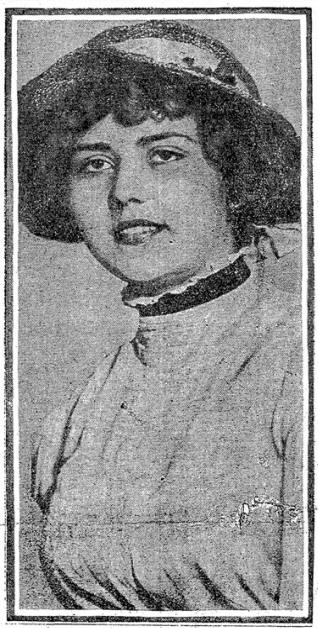 Must
Be Young, Good, Bring References, Not Poor and Permit of Suitable
Engagement Period--Mother Married at Age of 16 and Was
Happy--Parents Approve of Plan.
Must
Be Young, Good, Bring References, Not Poor and Permit of Suitable
Engagement Period--Mother Married at Age of 16 and Was
Happy--Parents Approve of Plan.


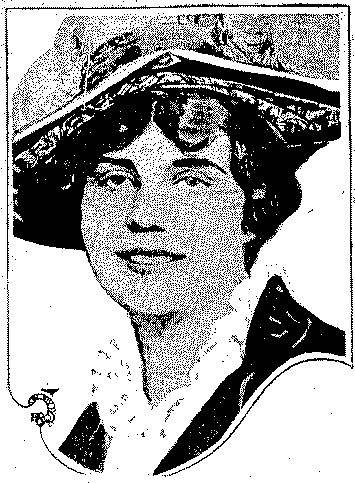 BRIDE'S
DREAM OF GILDED HAPPINESS ENDS IN SHOCKING FAMILY TRAGEDY
BRIDE'S
DREAM OF GILDED HAPPINESS ENDS IN SHOCKING FAMILY TRAGEDY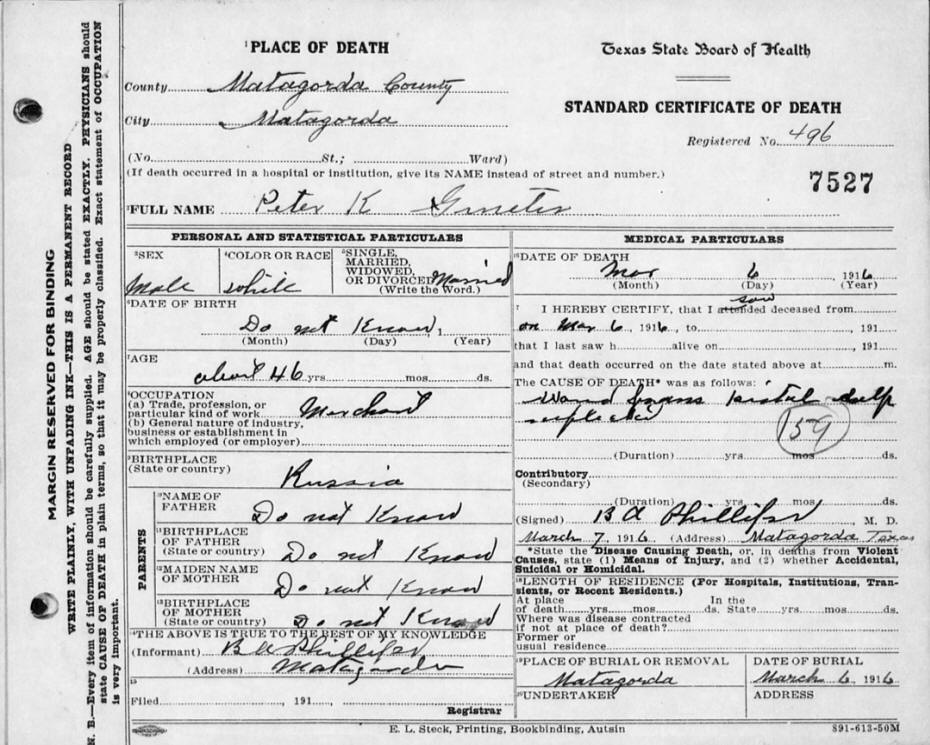
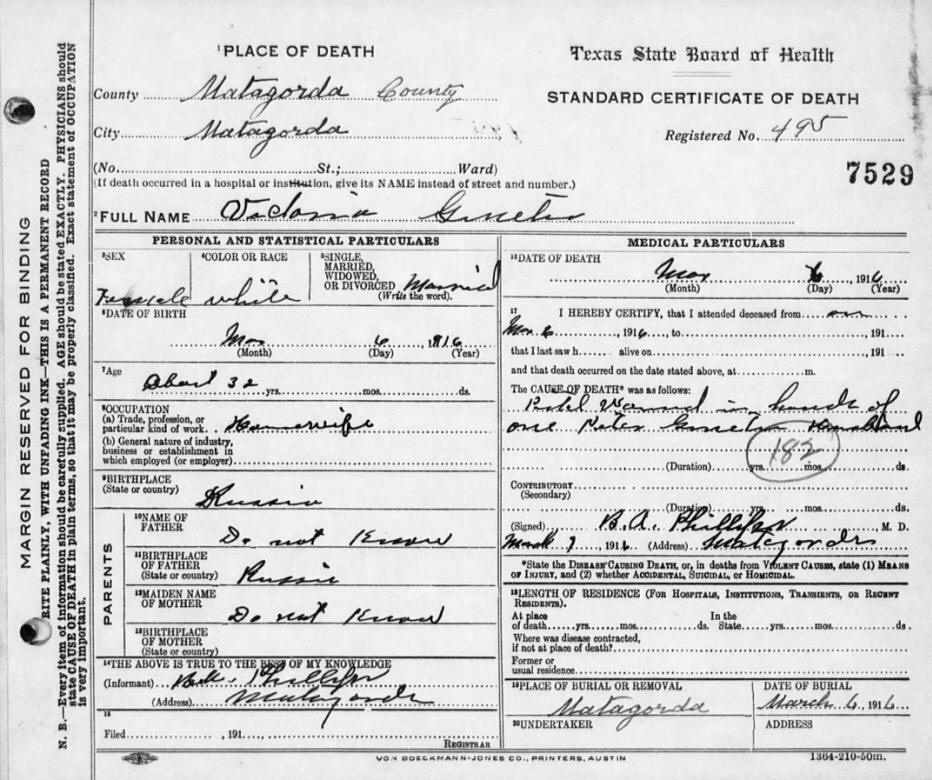
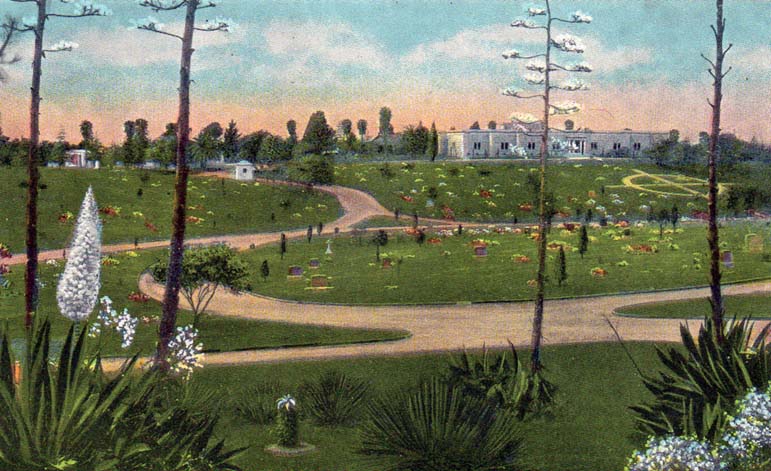
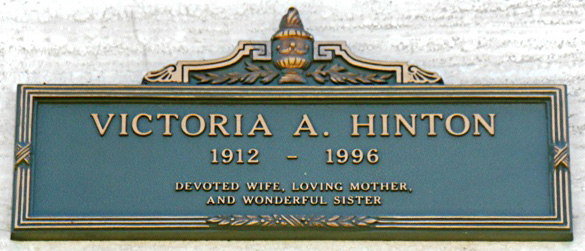
 Jim,
a California native, grew up in Beverly Hills, CA. He shared the
camaraderie of a group of young men at the local YMCA, who, while in
junior high school, became close knit and formed lasting
friendships. Initially, they called themselves the Banshees, but as
the group expanded in high school, they would become known as the
Saracens. These men still meet once a year. Following high school,
Jim joined the Air Force and served for five years as a radio
intercept analyst. He was stationed both in the Philippine Islands
and Germany. After his release from service, Jim attended Cal Poly,
San Luis Obispo, where he intended to study to become a printer. It
was there, in a piano class, that he met his soul mate and future
wife Bette. They were married in Ballard, CA on June 25, 1966. Jim
then changed majors and, following his true love of literature,
transferred to Cal State Northridge to complete a Bachelor of Arts
degree in English. He continued his education at UCLA, where he
earned a Master of Arts degree in English. Jim would then become an
English professor for the next 34 years.
Jim,
a California native, grew up in Beverly Hills, CA. He shared the
camaraderie of a group of young men at the local YMCA, who, while in
junior high school, became close knit and formed lasting
friendships. Initially, they called themselves the Banshees, but as
the group expanded in high school, they would become known as the
Saracens. These men still meet once a year. Following high school,
Jim joined the Air Force and served for five years as a radio
intercept analyst. He was stationed both in the Philippine Islands
and Germany. After his release from service, Jim attended Cal Poly,
San Luis Obispo, where he intended to study to become a printer. It
was there, in a piano class, that he met his soul mate and future
wife Bette. They were married in Ballard, CA on June 25, 1966. Jim
then changed majors and, following his true love of literature,
transferred to Cal State Northridge to complete a Bachelor of Arts
degree in English. He continued his education at UCLA, where he
earned a Master of Arts degree in English. Jim would then become an
English professor for the next 34 years. 
